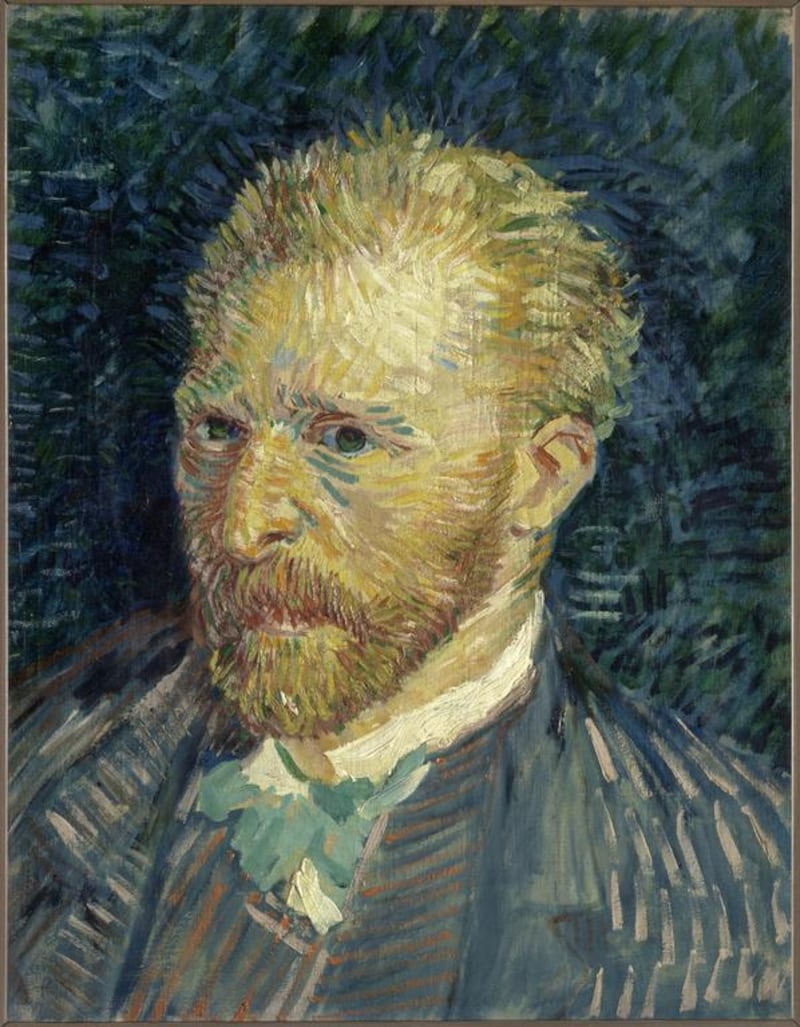A self-portrait by Vincent Van Gogh, an oil painting of a child fife player by Édouard Manet, Claude Monet's Impressionist landscape of the Saint-Lazare Station, Henri Matisse's Still Life with Magnolia and a rare salt cellar in ivory from the Benin Kingdom are among the items that will supplement the permanent collection of Louvre Abu Dhabi when it opens in December next year.
Yesterday, The National reported that about 300 works will be sent on loan from more than a dozen cultural institutions in France, including Leonardo da Vinci's exquisite portrait La Belle Ferronnière.
There are many more masterpieces set to be exhibited including Napoleon Crossing the Alps, one of five versions of a portrait of Napoleon Bonaparte painted by the French artist Jacques-Louis David between 1801 and 1805. Initially commissioned by the King of Spain, the composition is part of the collection of the national museum of the Châteaux de Versailles et de Trianon.
The loaned items will join the permenant collection of Louvre Abu Dhabi, the first universal museum to open in the Arab world, which will ensure visitors are immediately able to appreciate the significance of cultural items across many centuries.
Sheikh Sultan bin Tahnoon Al Nahyan, the chairman of Abu Dhabi Tourism & Culture Authority (TCA Abu Dhabi), the organisation with the mandate for Louvre Abu Dhabi, said: “These outstanding loans from our French partners represent the collaboration and exchange symbolic of Louvre Abu Dhabi and its progress to date. This will be the first time many of these works will travel to Abu Dhabi, or even the Middle East, and are a rare opportunity to see important art from French museums in dialogue with the Louvre Abu Dhabi’s collection.”
The selection made by TCA Abu Dhabi, which worked together with Agence France-Muséums (AFM) and the lending museums, was in line with the scientific and cultural programme of the UAE’s new institution. The loaned works will be at the Louvre Abu Dhabi for anywhere between three months and two years, depending on the context.
It is important to note that they have chosen key pieces from turning points in art history. Manet's painting Le Fifre (The Fife Player), for example, is notable because its subject is a child player from an everyday band. The boy himself has no particular significance but painted in a singular portrait, Manet is raising his status. This would have been considered controversial or groundbreaking at the time of painting. The Musée d'Orsay, the institution loaning the 1866 piece to the UAE capital, describes Manet as "upsetting established hierarchies of representation" with this painting.
Manet was one of the first artists to paint modern life and his simplified language was notably different from the opulence of his predecessors. Louvre Abu Dhabi already has three pieces from this French master, which were shown in Birth of a Museum exhibition on Saadiyat Island last year. Le Fifre is bound to complement these for the opening, planned for December next year.
The importance of Manet's contemporary, Claude Monet, in terms of artistic language, should not be understated. Known as the father of Impressionism, the term itself was coined from one of his paintings: Impression, Soleil Levant (Impression, Sunrise), which was first exhibited in 1874. Monet is perhaps best known for his paintings of nature – the Waterlilies series of 250 works, for example, are housed in the greatest institutions around the world. The painting La Gare Saint-Lazare (The Saint-Lazare Station) marks a transition he made in the middle of his career when he was trying to broaden his horizons.
In 1877, Monet asked for permission to work in the station and completed this brilliant study on the changing effects of light, movement and clouds of steam across the otherwise linear landscape, capturing the vastness of the station and the sky, while remaining true to his imperfect representations of shape and form.
From the 20th century, Henri Matisse's Still Life with Magnolia will be coming to Abu Dhabi from Paris's Centre Pomipdou. Matisse was one of the greatest still-life painters, and although he was painting in a time of great industrialism and technology, he insisted on simplified and colourful objects of beauty with heightened perspective and expression.
This style can be likened to a movement of painting called Fauvism, from the French word for wild beasts, referring to artists who used outrageously bold colours, simplified outlines and powerful brushwork. Still Life with Magnolia, a largely red canvas with items floating rather than being grounded, was executed towards the end of his career when he was interested in making his still-life works more animated and intense.
The David painting is important because it shows Napoleon totally in command and depicted as saviour of France from the political instability of the post-Revolutionary period.
Fleur Pellerin, the French minister of culture and communication, said that having these items appear in the UAE was a major step in the project, which began in 2007 with an intergovernmental agreement between the UAE and France.
“It is an acknowledgement of both the extraordinary richness of our national collections and the expertise of our museums. These masterpieces loaned by the 13 partner French museums and public institutions will implement a new dialogue between different world cultures and civilisations, in a spirit of universalism, that France is proud to promote throughout the world.”
As we have already seen in the initial exhibition last year, the pieces in the permanent collection of Louvre Abu Dhabi span a great period from distant prehistory to the present. Key pieces include a standing Bactrian Princess from the end of the third millennium BC, a Middle Eastern gold bracelet with lion heads, a painting by Osman Hamdi Bey from 1878, Composition with Blue, Red, Yellow, and Black by Piet Mondrian, an Alexander Calder mobile influenced by Mondrian, and Untitled I–IX, a series of nine canvases by the late American painter Cy Twombly.
aseaman@thenational.ae





